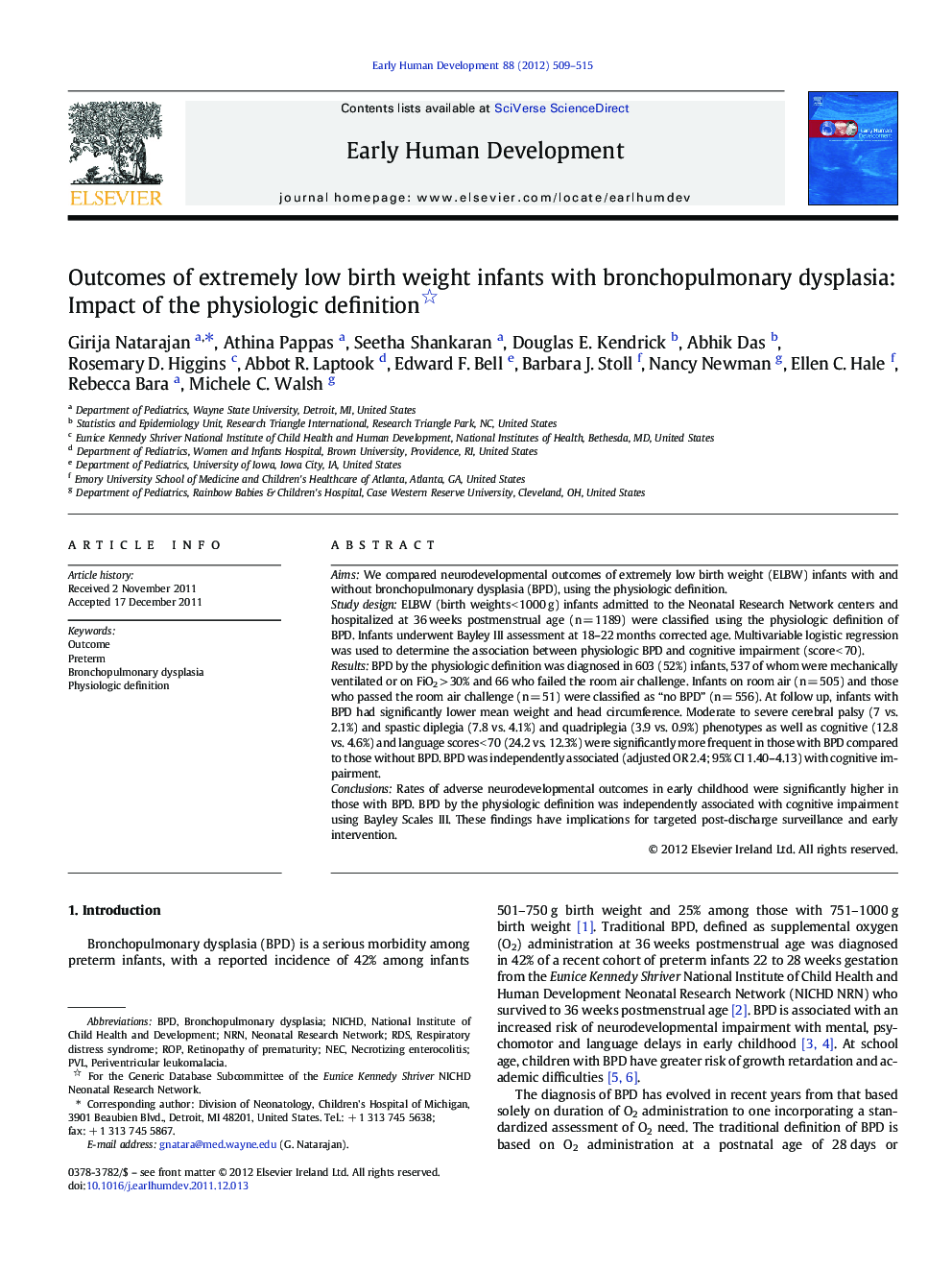| Article ID | Journal | Published Year | Pages | File Type |
|---|---|---|---|---|
| 6172118 | Early Human Development | 2012 | 7 Pages |
AimsWe compared neurodevelopmental outcomes of extremely low birth weight (ELBW) infants with and without bronchopulmonary dysplasia (BPD), using the physiologic definition.Study designELBW (birth weights < 1000 g) infants admitted to the Neonatal Research Network centers and hospitalized at 36 weeks postmenstrual age (n = 1189) were classified using the physiologic definition of BPD. Infants underwent Bayley III assessment at 18-22 months corrected age. Multivariable logistic regression was used to determine the association between physiologic BPD and cognitive impairment (score < 70).ResultsBPD by the physiologic definition was diagnosed in 603 (52%) infants, 537 of whom were mechanically ventilated or on FiO2 > 30% and 66 who failed the room air challenge. Infants on room air (n = 505) and those who passed the room air challenge (n = 51) were classified as “no BPD” (n = 556). At follow up, infants with BPD had significantly lower mean weight and head circumference. Moderate to severe cerebral palsy (7 vs. 2.1%) and spastic diplegia (7.8 vs. 4.1%) and quadriplegia (3.9 vs. 0.9%) phenotypes as well as cognitive (12.8 vs. 4.6%) and language scores < 70 (24.2 vs. 12.3%) were significantly more frequent in those with BPD compared to those without BPD. BPD was independently associated (adjusted OR 2.4; 95% CI 1.40-4.13) with cognitive impairment.ConclusionsRates of adverse neurodevelopmental outcomes in early childhood were significantly higher in those with BPD. BPD by the physiologic definition was independently associated with cognitive impairment using Bayley Scales III. These findings have implications for targeted post-discharge surveillance and early intervention.
